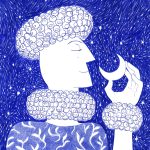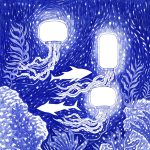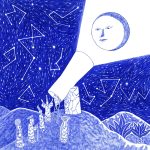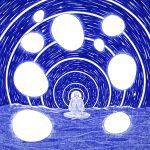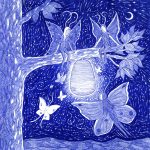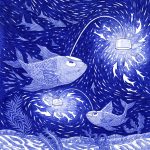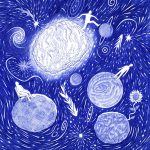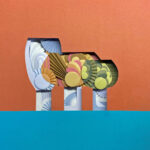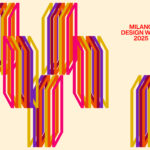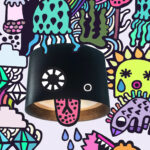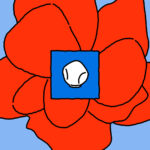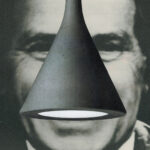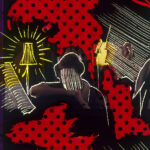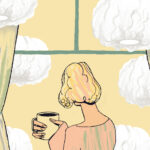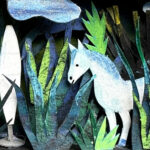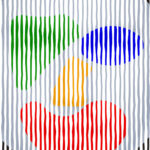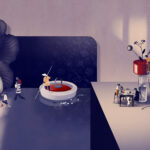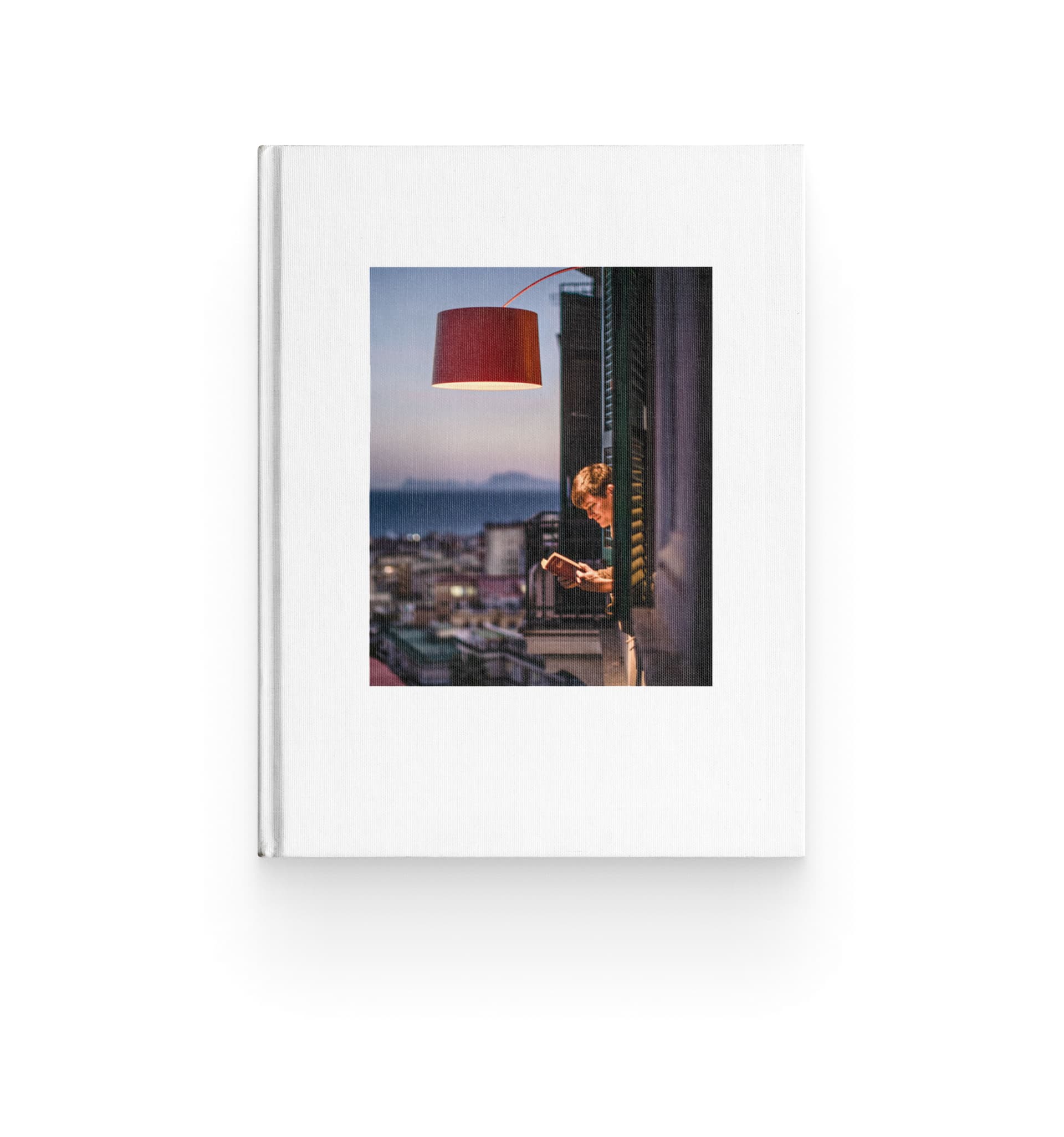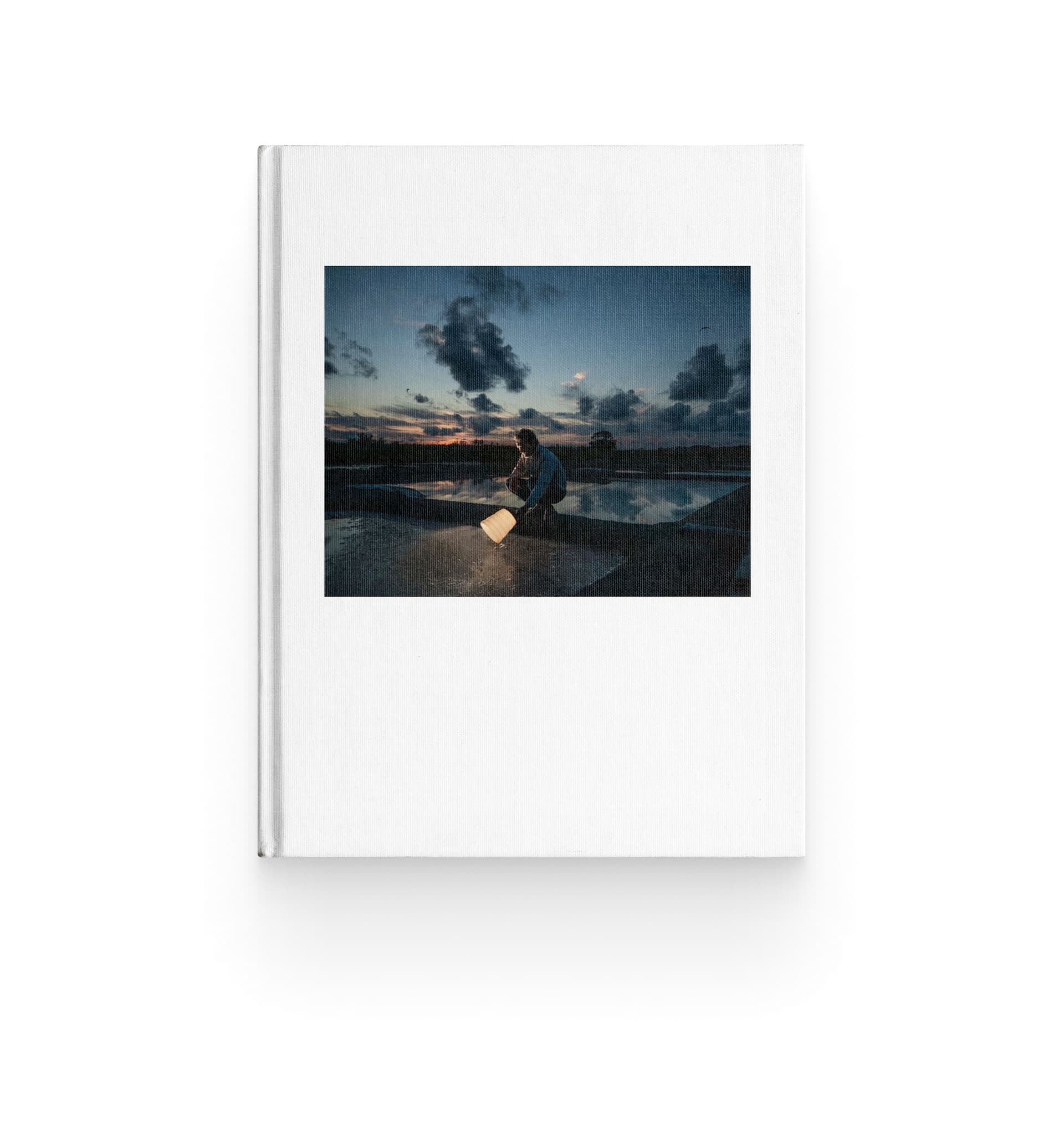Ball-pen dreamscape by Kevin Lucbert for “What’s in a Lamp?”
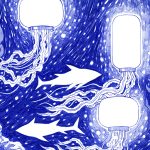
Uncover the power of dreaming and the surreal artistry of Kevin Lucbert as he brings Foscarini’s lamps to life in the new collaboration for Foscarini’s “What’s in a Lamp?”– the editorial project transforming Instagram’s @foscarinilamps feed into a virtual gallery for renowned and emerging artists.
“With just a simple ballpoint pen, new participating artist Kevin Lucbert creates and develops landscapes that exist somewhere between the familiar and unknown.His signature style blurs the divisions between writing, drawing and painting. Urging us to explore our dreams and scribble. Taking a commonplace object – a simple pen – and re-imagining it, turning it into an instrument of creative self-expression.
Self-proclaimed “”Franco-Berliner,”” Kevin Lucbert graduated from the National School of Decorative Arts in Paris in 2008, now splitting his time between Berlin and Paris as a member of The Ensaders — an artist collective that engages in performances, exhibitions and drawing workshops.
His creative process is rooted in the power of dreaming, and bringing his dreams to life. Stepping beyond the boundaries of consciousness, he fabricates enigmatic worlds that seamlessly blend natural elements such as the sun, water, earth, and sky. Through this captivating fusion, he challenges perceptions of reality, inviting audiences to embark on an awe-inspiring visual journey through space and time. With each stroke of his pen, the artist serves as our visionary guide, leading us to immerse ourselves in his vibrant and mystical universe.
In his series for Foscarini’s “”What’s in a Lamp?”” project, Kevin Lucbert ventured into Foscarini’s catalogue, allowing his imagination to run wild. The result: surreal scenarios fused with his signature style. Dive into a deep-sea abyss and encounter the captivating Chouchin medusas or some unusual lantern-fish with their illuminated Twiggy lamp heads guiding their way. Or gaze into the sky through the Nile table lamp, transformed into a colossal telescope to observe the moon, becoming a gateway to the universe and the sky.
Expand your horizons and witness Kevin Lucbert’s collaboration with Foscarini’s “”What’s in a Lamp?”” project by visiting @foscarinilamps Instagram channel. Experience the enchantment for yourself and allow his art to transport you to extraordinary dimensions. “
Tell us a bit about yourself and your journey as an artist. Were you always aware, to some extent, that this was the path you wanted to pursue?
I was born in Paris in 1985. As a child, I immersed myself in comics, reading and re-reading the family collection of classics such as Tintin and Asterix. I also discovered “auteur” comics through magazines like “Metal Hurlant” and “A Suivre”. Artists like Moebius, Tardi, Hugo Pratt, Enki Bilal, Druillet, and Comès published bizarre yet fascinating stories in their own personal style, featuring intricate black and white ink work. It greatly impressed my young mind, fueling my passion to become a comic book artist and cartoonist.
Years later, I studied art at the “Ecole Nationale Supérieure des Arts Décoratifs” in Paris, focusing on the “printed image” section. Here, I learned illustration, etching, silkscreen printing, graphic design, and even dabbled in filmmaking. The multidisciplinary approach of this school fostered open-mindedness and broadened my perspective. In 2005-2006, I had the pleasure of spending an Erasmus exchange year studying Kommunikationsdesign at the Kunsthochschule Berlin-Weissensee, an experience I deeply cherished. In 2012, I made the decision to relocate to Berlin, where my family and I have been living for the past 10 years.
Additionally, I am a proud member of an artists’ collective called the “Ensaders,” which I co-founded with two fellow students: Yann Bagot and Nathanaël Mikles. Since our meeting in 2002, we have collaborated on collective drawings, conducted workshops, and performed together.
We’re intrigued by your distinctive style, with ball-pen traits that skillfully manipulate shadows and light. How would you describe your style?
My style is figurative, leaning towards the simplification and abstraction of forms. I juxtapose straight, pure lines and geometric patterns with the curves and chaos of natural elements. The modern city, with its orthogonality, contrasts against the wild sea or the dark forest. I love combining these opposites. The biro pen allows me to create intricate details, almost like an engraving, while also using a ruler to trace grids or geometric patterns with clean and sharp lines. These different line behaviors, unified by the blue ink, provide a range of graphic possibilities that I enjoy exploring.
What inspired you to choose a ball-pen as your preferred medium?
I always use these pens as I enjoy sketching outdoors. They are always with me. I don’t like to carry too many tools or art supplies. The iconic blue Bic pen is something that everyone has easily accessible. It’s the instrument through which dreams take shape while scribbling on a piece of paper. It’s the same pen I used to doodle with as a child, filling the margins of my school notebooks. When on the phone, I use it to take notes, and then unconsciously create intricate patterns that intertwine on a post-it. I was curious to discover how I could express something different using such a simple tool and create a unique world with just blue ink.
Can you tell us about the significance of the dual blue-white scenario in your surreal illustrations?
I became fascinated by the unique blue color of Bic pen, with its peculiar blue-red shade. This blue can be explored with such great intensity. The lines can be criss-crossed almost indefinitely to create shades and depths, similar to the “eaux-forte” etching technique. In my illustrations, I use the white of the paper as a reserve to create contrast and luminosity, which enhances the significance of the blue color.
In my perception, blue is a color that is closely associated with the realm of dreams. It is linked to the world of water, night, and sleep – to the world of dreams that is rooted in the mystery of the Unconscious. The unconscious expresses itself in a strange language that art can try to translate. To me, a drawing, like any work of art, results from the alchemy that occurs between the conscious and the unconscious. The blue of Bic pen is so familiar to us that it has become an integral part of our psyche.
How would you describe your initial impressions of Foscarini’s lamps when you first encountered them?
I found them beautiful and elegant. The simplicity yet complexity of their shapes intrigued me. I saw more than just lamps; I saw stories of light that could inspire and ignite ideas within a home. Light plays a significant role in my monochrome work, and I often play with the contrast between light and dark areas. The beauty of light is heightened by the strength of the darkness that surrounds it. I often remember this quote from Stanley Kubrick: “However vast the darkness, we must supply our own light.”
In this series of artworks, Foscarini lamps become part of dreamy scenes, giving life (and light) to imaginary and surreal worlds. Can you tell us more about the inspiration behind this series?
The series is deeply rooted in surrealism, dreams, and fairy tales. During my childhood vacations spent in Brittany, my mother’s birthplace, I was surrounded by a land teeming with legends and peculiar creatures from Celtic mythology. Korrigans, spirits, and faerie folk inhabit heather moors and ruined castles, and these motifs consistently underlie my artistic endeavors.
I take pleasure in projecting contemporary objects into a surreal realm, where ordinary items like straight chairs, lamps, and modern parquet floors come alive, metamorphosing into strange entities that blur the boundaries between dream and reality. I started by observing the abstract form of the lamp and tried to imagine the emotions it could evoke in me. From there, I created a series of sketches, placing the lamp in various contexts. During the process, I often listen to music, which sets a particular mood and sometimes brings unexpected ideas and inspiration. I delved into the notion of how the lamp could become the main element, the actor, in a strange story.
Strange stories that resemble fairy tales and evoke a sense of Chagall’s style, did Chagall’s work influence your artistic vision?
Yes, I admire Chagall for his figurative yet dreamlike paintings. I also find inspiration in René Magritte’s surrealism. I would say that this series of drawings embodies the spirit of Georges Méliès’ films, particularly “Le Voyage dans la Lune”. It’s a fusion of fairy tales, poetry, and nocturnal surrealism. Cinema, too, utilizes light as a medium to create movement and stories. I hold great appreciation for artists who create striking universes and visions, such as Alfred Kubin, Odilon Redon, and Edward Munch. As a child, I loved comic book artists like Hugo Pratt and Moebius, as well as Roland Topor and his bizarre universe, particularly through the animated film “La Planète Sauvage”. They instilled in me a love for storytelling and the infinite possibilities of drawing.
What is your personal favorite artwork of your “What’s in a lamp?” series and why?
I love “Nuee”, because it reminds me of Antoine de Saint-Exupéry’s “Little Prince” with its small planets and people living on it. Also “Rituals”, because it takes us, like in “Alice in Wonderland”, through the looking glass.
Your illustrations exhibit a fascinating interplay of simplicity and complexity, as the minimalistic pen strokes give way to compelling narratives. What is the role of storytelling in the art of illustration?
I love telling stories and bringing the extraordinary out of the ordinary. I initially began as a comic book artist, and my practice has gradually evolved towards creating a series of drawings that heavily emphasize the narrative dimension. It feels as if these drawings work together to construct a story, to depict an unknown dreamlike world. I believe that our desire to explore the unknown is intimately tied to our urge towards storytelling. Ancient Greeks practiced the “cult of mysteries,” a series of tales and legends reserved for initiates. For us, stories are essential, shaping our minds from a young age and coursing through our veins like blood. To capture people’s attention, few phrases are as magical and hypnotic as “Once upon a time.”
Can you walk us through your creative process for your artworks? How do you create space for new ideas to flourish?
First, while contemplating the subject, I take a moment to doodle and make random sketches and pencil drafts on paper. Along the way, certain sketches “ring true” by capturing the dynamics and momentum necessary for a finished drawing. A sketch is a captivating thing; with just a few strokes, it embodies the energy and core elements of the final drawing. Nonetheless, I remain open to modifying the drawing as I bring it to completion. New ideas may emerge during the creative process.
I seek inspiration from various sources: reading, music, and sometimes even in my dreams. One drawing often leads to the creation of another. In a series of works, my drawings follow a certain logic, sometimes narratively connected and other times contrasting the previous one. At times, drawings even form their own “mini-series,” as exemplified by the untitled series “Meditation 1,2,3,…”
As a reference, I truly enjoy reading the books of psychiatrist Carl Gustav Jung. His studies on the unconscious and dreams fascinate me. His approach is profoundly creative, brimming with ideas and visions. He examines numerous images and symbols from art history and our “collective unconscious.” For instance, what do figures like a tree, water, or the sun mean to us? His exploration of mythology and archetypes is remarkably captivating.
What is design for you?
To me, design is the infusion of spirit into matter. It is the breath that breathes life into raw materials. It is the act of filling objects with love, with the hope that they reflect that love back to everyone. We all desire to encounter artifacts that have souls and stories to tell.
